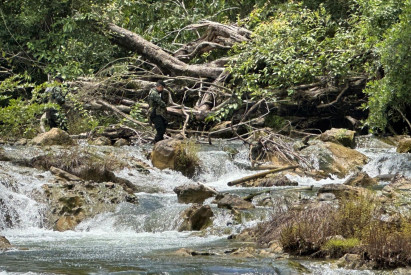
KANCHANABURI: Malaria concerns are growing among soldiers patrolling along the Myanmar border in Sangkhla Buri district, according to the army.
Army spokeswoman Maj Gen Sirichan Ngathong said soldiers patrolling the border in tambon Lai Wo were educated on how to protect against rampant malaria infections, but concerns remained.
Troops attached to the Surasee Task Force were replaced with members of the Ratchamanu fast-deployment unit under the Naresuan Task Force on April 1 due to fears about malaria, she said.
Eleven soldiers from the unit took over after the Suranaree Task Force was stationed in the border area for 24 days to perform the Suriya Rivers Operation (SRO) in tambon Lai Wo, 300 metres away from Myanmar, she said.
The troops were replaced because the Naresuan Task Force, although located in neighbouring Tak, was closer to Lai Wo than the headquarters of the Suranaree Task Force in Kanchanaburi, she said.
The SRO, established in 2000, covers border areas in Kanchanaburi and Tak. On the Myanmar side, clashes between ethnic rebels and the military had occurred in the past.
The army spokeswoman said the army’s Medical Department was taking care of the health of SRO personnel in the wake of malaria infections.
The soldiers are offered access to medical assistance from the Baan Le Tong Khu clinic and Umphang Hospital in Tak, she said.
Maj Gen Kasem Phinyochon, deputy chief of the army’s Medical Department, toured the SRO base along with a medical team who took soldiers’ blood samples for malaria testing.
The team also presented medical kits to the SRO.
Maj Gen Kasem said malaria was rampant along the border with Myanmar in Tak and Sangkhla Buri and with Cambodia in Trat province.
A malaria watch has been set in place as the disease has developed resistance to drugs, he said.
Soldiers are also given information on how to shield themselves from malaria, including how to sleep within mosquito nets and apply repellent before going on patrol, he said.
If soldiers come down with malaria, they can be transported to the nearest hospital quickly either via land vehicle or helicopter, he said.

